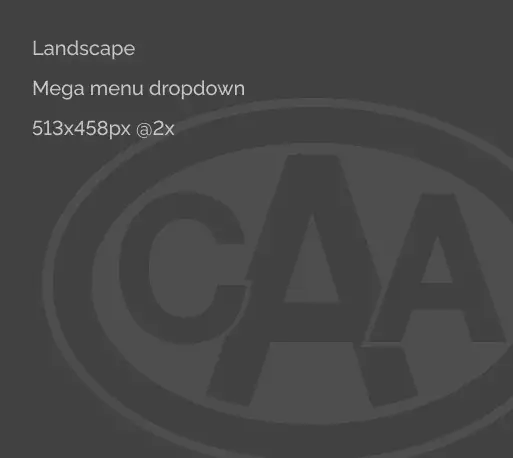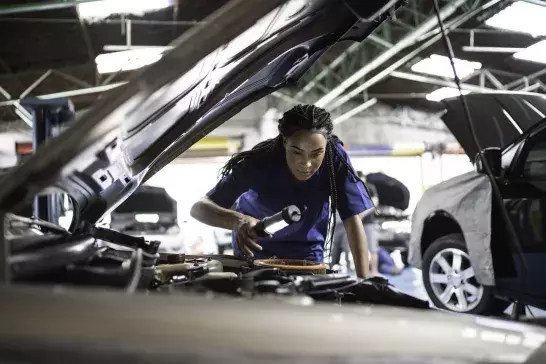
It all adds up
The CAA driving cost calculator answers your questions so you can weigh the pros and cons of your next vehicle purchase. It provides price, fuel economy and environmental impact information in a clear, concise format that allows Members to compare two vehicles. Don’t have a CAA Membership?
Sign up to take advantage of great deals and savings. CAA Memberships start at just $301 a year, plus tax.
Car care and tips
It’s the best way to stay on top of your vehicle’s health but it can also prove valuable if a warranty issue arises and proof of maintenance is required to obtain warranty service.
Your vehicle's battery is an extremely important component. It must remain in good condition to withstand harsh cold or extreme heat. A simple battery check can prevent you from being stranded in an empty parking lot. Most car batteries last between three to five years.
Temperature changes can affect tire pressure. Having the proper tire pressure will maximize your gas mileage and save wear and tear on your seasonal tires!
Tires naturally degrade over time – and driving with insufficient tread depth or sidewall damage can be hazardous. Do a Toonie test to check if your tires are safe for driving.
Don't wait until small chips lead to costly repairs down the road! Parking your car directly in the sun is one of the fastest ways for a crack to grow. If a chip grows too much, windshield repair may no longer be an option, and your windshield may need to be replaced.
As a general rule, you should change your oil at least twice yearly. Remember that driving habits and temperatures can affect how quickly oil degrades. Most newer cars have oil monitoring systems, so your vehicle will track usage and oil conditions, signalling when you need a change. If you have an older vehicle, check the owner’s manual or factory maintenance schedule for information on maintenance schedules.
Deep cleaning of your car’s interior prevents dust from causing wear and tear and removes stubborn stains from your dashboards, mats or leather seats. When your vehicle is deep cleaned, a lot of debris is removed, improving the air quality inside the vehicle. Clean airflow and the absence of garbage in a car help drivers and passengers enjoy a germ-free environment. If you ever wish to sell your car, potential buyers will see how well cared for it is.
Frequently asked questions
The Driving Costs Calculator uses common vehicles you would find on Canadian roads. Vehicles older than 2015, low-volume vehicles or utility vehicles such as passenger vans are unavailable. If the car you are looking for is brand new, it may not be on the road yet or has only recently been released for sale. Our data provider, Vencentric, requires time to collect information on new vehicles to calculate these costs accurately. If you believe a vehicle is incorrectly missing, contact [email protected].
Not all types of driving have the same impact on your car and fuel economy. City driving involves more stopping and starting, which burns more fuel. Highway driving involves your vehicle driving at a high continuous speed, which is actually easier on your car’s engine. The calculator defaults at 45% city and 55% highway driving, which is the average split for most Canadians. If your driving habits differ from this breakdown, you can adjust the slider on the results page.
The fuel cost is based on the average price for regular fuel in your province. These prices are provided by www.caa.ca/gas-prices, and they are updated daily. If your vehicle takes a different type of fuel, you can adjust the price on the results page.
Often overlooked, depreciation is the largest expense when it comes to operating and ownership costs. Depreciation is the reduction in value of a vehicle incurred during the period of ownership. The annual depreciation is estimated by looking at the difference between the current market price of a vehicle and the forecasted value of the vehicle, which is provided by Canadian Black Book.
Maintenance is the cost of keeping your vehicle in running order, including frequency, parts prices and labour rates. The assumptions are based on:
- the manufacturer recommended maintenance schedules
- parts prices based on manufacturer pricing
- a labour rate of $80 CDN per hour
- unscheduled maintenance costs based on national prices (ex. tires and battery).
The cost for maintaining a driver’s license and registering the vehicle in your province.
Insurance varies by person. For the simplicity of the tool, we’ve made a few assumptions. The cost is calculated using multiple insurance industry sources for each vehicle. However, the tool allows you to input your own cost if it differs from the number we provide. The amount is based on the following assumptions:
- a driver under the age of 65
- six years of driving experience with no accidents
- living in a suburban/ urban location
- passive restraint and anti-theft discounts
- personal use
- $500 deductible for both collision and comprehensive
The number of kilometres on a vehicle helps determine how much it has been used and gives an indication of the kind of wear and tear it has experienced. Vehicles also need maintenance when they hit a certain number of kilometres (ex. belts or brakes replaced), so this can also indicate when you should expect future expenses.
Environmental costs are the amount of greenhouse gas emissions your car produces when running. For internal combustion engine vehicles, this number is based on the gas burned by the vehicle. Electric vehicles do not emit any emissions when the vehicle is running. For hybrids, we include the CO2 emissions for when the internal combustion part of the engine is in use. We use the following assumptions in our calculations: Assumptions include:
- 55% highway and 45% city driving split
- Battery is fully charged every day
- Max range of battery is achieved before gasoline is used
Drivers can adjust how they drive to help reduce fuel consumption and their environmental impact. To learn more visit www.caa.ca/ecodriving.
CAA has 11 of the most comprehensive EV charging station maps in Canada. You can visit CAA’s Electric Vehicle Charging Station Locator here: www.caa.ca/evstations/.
Yes. The monthly payment is an estimate that assumes a 15% down payment using current finance rates in your area and includes the principal amount of the loan along with interest payments. The vehicle price used is based on an estimate of the typical price a consumer will pay for this vehicle. Your monthly car payment will differ and depend on the actual price you pay for the vehicle, your down payment amount, and the interest rate on your loan. The term of the loan is equal to the timeframe analyzed in this calculator.
Yes, the calculation includes taxes on insurance and maintenance costs. This includes provincial taxes for the province you chose on step 1 and federal taxes.
CAA provides a list of the most fuel-efficient vehicles by category, here. If you are looking at purchasing an electric or hybrid, click here for a complete list of EVs and click here for a list of hybrids.
Learning to drive and purchasing your first vehicle are both exciting milestones. CAA has online resources for young drivers that include general tips, safety information, and tips for purchasing your first vehicle. To learn more visit www.caa.ca/young-drivers.
Yes, EV incentives, a rebate given to consumers who purchase an eligible electric vehicle, are included in the annual cost. To learn more about incentives in these provinces visit: https://www.caa.ca/electric-vehicles/government-incentives.
There is a low demand for used EVs in the current market, as they are seen as fairly new technology. EVs are well-tested and reliable vehicles, however, they are still considered new to the car market, which makes some hesitant to invest in them. As market penetration for EVs increases, the discrepancy in depreciation is predicted to even out.
1. Visit caaneo.ca/termsandconditions for full Membership Terms and Conditions. Terms and conditions apply.












